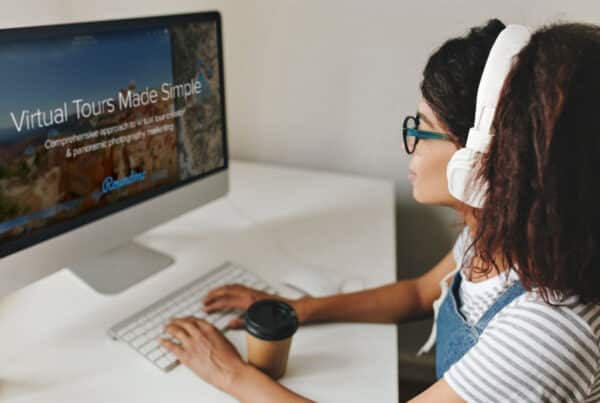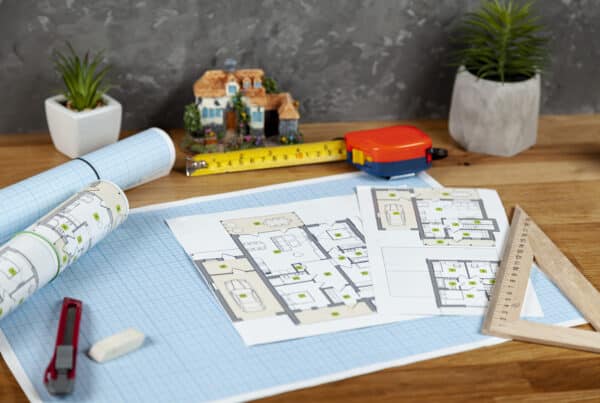
Summary: In today’s competitive market, creating an engaging online shopping experience can set your business apart. This article delves into the benefits and strategies of integrating virtual tours into your retail website. Discover how virtual tours can boost customer engagement, increase sales, and provide your shoppers with an immersive virtual shopping experience that mirrors the joys of in-person browsing.
What Is a Virtual Store Tour?
A virtual store tour utilizes 3D and other immersive technologies to simulate the experience of walking through a physical retail environment online. This digital twin of a retail space allows customers to explore products as if they were there in person, enhancing the virtual shopping experience and potentially boosting sales. Virtual tours offer shoppers a detailed, visually appealing, and interactive way to engage with a brand’s offerings without leaving their homes.
Why Are Virtual Tours Becoming Essential in E-Commerce?
With the rise of e-commerce, particularly accelerated by the COVID-19 pandemic, retailers are constantly looking for innovative solutions to mimic the in-person shopping experience. Virtual tours serve as a powerful tool to bridge the gap between digital and physical retail by offering an immersive, interactive 3D experience. This is not just a novelty; it’s becoming a crucial part of maintaining competitive advantage in a rapidly evolving retail landscape.
How Can Virtual Tours Enhance Customer Experience?

Virtual tours can transform a mundane online shopping trip into an engaging adventure. Customers can virtually navigate through the store, interact with products of interest, and even get detailed information and visual insights that regular product pages might not offer. This level of interaction significantly enhances customer engagement, encourages longer visits, and increases the likelihood of making a purchase.
What Technologies Are Used to Create Virtual Tours?
Creating a virtual tour typically involves 3D modeling, panoramic photography, and sometimes even augmented reality (AR). Platforms like Matterport are popular for creating detailed 3D representations of physical spaces. These technologies allow for seamless, realistic virtual environments that can be integrated into a retailer’s e-commerce platform.
Benefits of Integrating Virtual Tours on Your Retail Website
Integrating a virtual tour into your e-commerce site can dramatically improve the user experience. It allows customers to obtain a clearer understanding of what they’re buying, which can reduce return rates and increase customer satisfaction. Furthermore, virtual tours are known to boost SEO rankings as they lead to longer engagement times, reducing bounce rates and improving overall visibility online.
Step-by-Step Guide to Creating an Engaging Virtual Tour
To create a virtual store tour, start by choosing the right technology provider, like Matterport or Shopify 3D, that integrates easily with your current e-commerce platform. Next, plan the layout of your tour, ensuring it logically showcases your products and store features. Finally, embed interactive elements such as clickable product images or videos to enhance the interactive experience.
Real-Life Success Stories of Virtual Store Tours in Retail
Many leading retailers have successfully integrated virtual tours into their marketing strategies. For instance, furniture retailers have used 3D tours to allow customers to explore various furniture arrangements in virtual rooms, boosting both engagement and sales. These success stories provide actionable insights and inspiration for other retailers considering implementing this technology.
How to Market Your Virtual Store Tour
Effective marketing of your virtual tour is key to maximizing its benefits. Promote your virtual tour through social media, email newsletters, and on your website homepage. Consider launching a special campaign or event that invites customers to take their first virtual tour, possibly offering promotions or discounts as incentives.
Challenges in Implementing Virtual Tours and Solutions

While the benefits are plentiful, implementing virtual tours can come with challenges such as high upfront costs and the need for technical expertise. Overcome these by selecting scalable solutions tailored to your business size and budget, and consider outsourcing to digital marketing agencies if in-house resources are limited.
The Future of Virtual Tours in Retail and E-Commerce
As technology advances, the future of virtual tours in retail looks promising. Innovations in AR and VR could further enhance the realism and interactivity of virtual tours, making them an even more integral part of the e-commerce experience. Retailers who adopt these technologies early may find themselves well ahead in the digital transformation of retail.
Key Takeaways:
- Engagement Boost: Virtual tours significantly enhance customer engagement and interaction on your e-commerce site.
- Sales Increase: By providing a clearer understanding of products and an enjoyable browsing experience, virtual tours can lead to increased sales.
- Competitive Edge: Offering a virtual tour sets your retail business apart in a crowded e-commerce landscape.
- Future-Proofing: Early adoption of virtual tour technologies prepares your business for future advancements in digital retail.
Harness the power of virtual store tours to transform your e-commerce approach and offer unparalleled customer experiences that drive growth and customer loyalty.
Elevate your e-commerce strategy with our immersive virtual store tours.
Engage customers like never before and showcase your products in a captivating, interactive way. Contact us today to discover how our innovative solutions can transform your online store. Reach out now and start revolutionizing your shopping experience!




